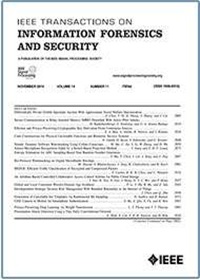Dual-Cohesion Metric Learning for Few-Shot Hand-Based Multimodal Recognition
IF 6.3
1区 计算机科学
Q1 COMPUTER SCIENCE, THEORY & METHODS
IEEE Transactions on Information Forensics and Security
Pub Date : 2025-03-14
DOI:10.1109/TIFS.2025.3551646
引用次数: 0
Abstract
Hand-based multimodal biometrics has garnered significant attention in information security and identity authentication. However, prevalent multimodal recognition techniques often extract the discriminant features from different modalities separately, ignoring the structural consistency between various modalities of the same class. Moreover, these methods generally focus on specific-scenarios, where recognition performance will be compromised when faced with different databases or multiple application scenarios. To solve these limitations, we present an innovative Dual-Cohesion Metric Learning (DCML) framework embedded in noise decomposition for few-shot hand multimodal biometrics. This approach comprehensively exploits multimodal features from both intra-modal and inter-modal structural consistency to improve its robustness across multiple applications. Specifically, DCML imposes a dual-cohesion mechanism to pull in the cross-modal distance of the same label and the within-class distance for each modal, while concurrently pushing away the between-class distance in the projected space. Furthermore, in the procedure of feature learning, the proposed DCML incorporates the low-rank constraint to mitigate the interference of noise in the raw data and enforces a sparsity constraint to extract more salient and compact features. Notably, our DCML can be flexibly extended to other multimodal biometrics. Extensive experimental results on six multimodal datasets demonstrated that our DCML outperforms the latest approaches in multiple multimodal recognition scenarios and has strong generalization ability even when the training samples are small.基于少量手部图像的多模态识别的双聚合度量学习
本文章由计算机程序翻译,如有差异,请以英文原文为准。
求助全文
约1分钟内获得全文
求助全文
来源期刊

IEEE Transactions on Information Forensics and Security
工程技术-工程:电子与电气
CiteScore
14.40
自引率
7.40%
发文量
234
审稿时长
6.5 months
期刊介绍:
The IEEE Transactions on Information Forensics and Security covers the sciences, technologies, and applications relating to information forensics, information security, biometrics, surveillance and systems applications that incorporate these features
 求助内容:
求助内容: 应助结果提醒方式:
应助结果提醒方式:


